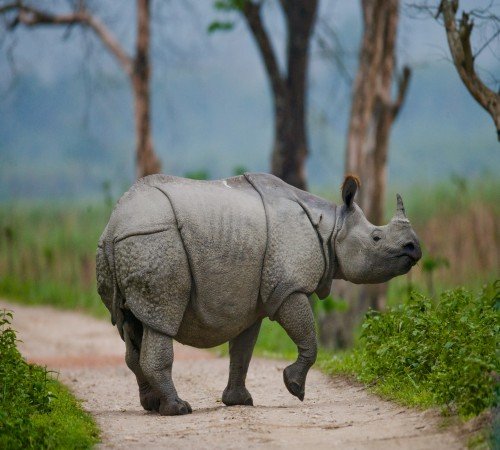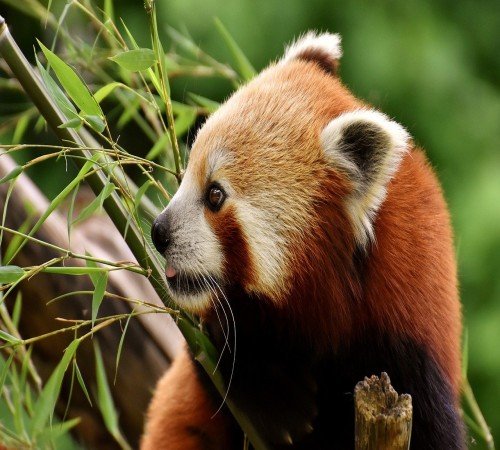Talk to a Destination Expert


The very essence of travel lies in understanding the land, its culture, tradition and its biodiversity. Wildlife tours help tourists to understand and appreciate the biodiversity of the country, the spectacular jungle trails into the wilderness on plains and hills and in the wonderful floating national park.
Spread across the length and breadth of the nation, wildlife sanctuaries and national parks are home to thousands of species. Rich in flora and fauna, Indian wildlife tourism offers a great experience to tourists of all types. Nature lovers are sure to fall in love with the stunning landscape and the serenity; safari rides are great entertainment to fun lovers and adventure seekers are sure to enjoy challenging safaris and trekking to sight great animals in their natural habitat. Indian wildlife tourism is a dream destination for all tourists.
Home to one-horned rhino and a UNESCO world heritage site, Kaziranga National Park is one amongst the unmodified natural areas in the world.
Is there a nature lover who would not want to trek for about 5 kilometres of lush greenery watching a wide range of species in their natural habitat? Sounds like a dream? Welcome to Periyar National Park.
Here are the top 10 things to do in wildlife adventure in India.


Covering an area of about 390 square kilometres, Ranthambore National Park is a blend of hills, forests and lakes making it a perfect setting for tigers. Established in the year 1955, this national park turned into a tiger reserve in 1973 to protect Bengal tiger from extinction. Jeep safari at Ranthambore National Park is a great way to explore the park and spot tigers in its natural habitat. The park is divided into 10 zones. The major zones are closed between July to September.


Home to a wide range of birds including migratory birds, Keoladeo National Park is a bird lovers’ paradise. Situated in Rajasthan’s Bharatpur, this national park is declared a UNESCO world heritage site. With water resources aplenty Keoladeo National Park attracts birds in great numbers. You can explore the park by walk or ride in rented cycle rickshaws. Keoladeo National Park is open throughout the year. However, the best time to visit would be from December to February when migratory birds visit the park.


Tiger trail at Kanha and Bandhavgarh, the tiger reserves, offers an amazing experience to spot tigers in their natural habitat. While Kanha is double the size of Bandhavgarh, tiger density is higher in the latter. Jeep safari is a popular mode used for exploring the dense forests of Kanha and Bandhavgarh to spot tigers. While on tiger trail, you may also want to visit the Bandhavgarh Fort, which is an ancient fort with historical importance.Closure months:
Kanha and Bandhavgarh – Only Open between July to September


With over 2200 rhinoceros, Kaziranga National Park has the most number of rhinos in the world. Great Indian one horned rhinoceros, Bengal tiger, elephants, wild water buffalo and eastern swamp deer are famously called the Big Five of Kaziranga. Situated between River Brahmaputra and Karbi Hills, the 430 square kilometre national park was declared a UNESCO world heritage site in 1985. Kaziranga remains closed from May to October every year as the risk of Brahmaputra river floods is very high during these months.


Situated in Gujarat, Gir National Park is the only place other than Africa where you can spot the jungle kings in their natural habitat roaming around. Also called as Sasan Gir, the 1412 square kilometre of Gir with its thick forests add a touch of magic to lion safaris. Apart from lions, you can also spot leopards, hyena and deer. The encounters with these wild animals can almost take you off guard. Gir National Park is closed from 16th June to 15th October every year.

Also called Periyar Tiger Reserve, Periyar National Park is ideally located in Kerala’s western ghats. Apart from tigers, this park is also home to leopards, elephants, wild boar and sambar deer among a wide range of species. At high altitudes, Periyar National Park has diverse terrains and offers spectacular views as one walks amidst nature. Nature walk refreshes and rejuvenates you but you may see just a few animals including elephants, boars and some birds. Periyar National Park is open round the year.

Situated in Ladakh at high altitudes, Hemis National Park is the largest national park in South Asia spanning an area of 4400 square kilometres. It is the natural habitat for snow leopards that are always hard to spot. Apart from the elusive snow leopards, Hemis is also home to Himalayan marmot, Tibetan wolf, Himalayan mouse hare and red fox. While Hemis National Park is open throughout the year, trekking and safari routes are closed from late October till April.

A place where leopards are not feared but worshipped, where leopards exist in art forms and are idolised, it really fits that the place is called the leopard country. Bera, a small village in Rajasthan, is the leopard kingdom that lies in the foothills of Aravalli. The rocky hills and rugged landscape make it a perfect abode for leopards. Bera is open for tourists throughout the year. However, it is highly recommended to consider weather conditions as extreme weathers may make the journey difficult.

Khangchendzonga National Park is located on the Himalayan range with varied terrains including forests, caves, plains, valleys, peaks, rivers, lakes and the mighty Mount Kangchenjunga, the third highest peak in the world. The massive 178,400 ha area with stunning and contrasting physical features is a UNESCO world heritage site that is home to amazing ranges of flora and fauna including red panda, the endangered species. Khangchendzonga is open throughout the year but avoid visiting between June and September, which is the monsoon season.

Located at an elevation of over 3500 metre above mean sea level, Nanda Devi National Park was declared a UNESCO world heritage site in 1988. Spanning three districts of Uttarakhand, this National Park rich in biodiversity, is divided into core zone and outer buffer zone. Nanda Devi National Park is home to Asiatic black bear, which is an endangered species. Apart from a wide range of species, other endangered animals found here include Himalayan musk deer and snow leopards.
Closure months: November to April